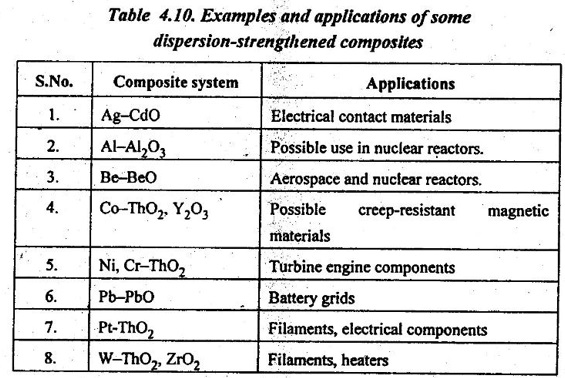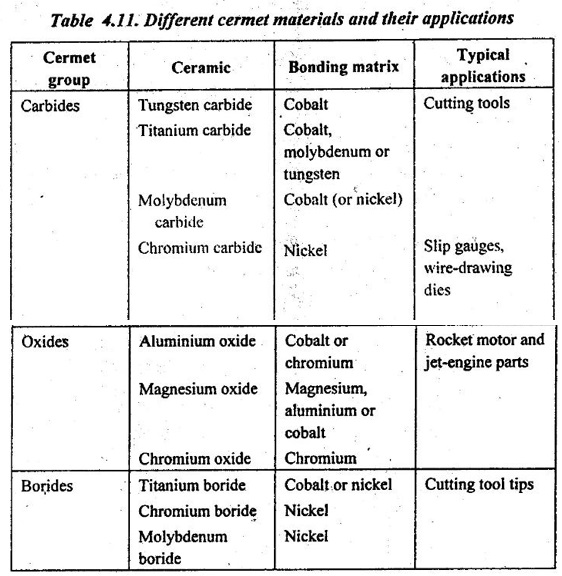Consider a metal matrix with a fine distribution of secondary particles.
PARTICLE-REINFORCED COMPOSITES
✓ Particle-reinforced composites, also known as particle com- posites or particulate composites, consist of particles of one material dispersed in a matrix of a second material.
✓ Consider a metal matrix with a fine distribution of secondary particles. Our object is to strengthen this matrix-mixture so that to obtain a composite material with superior characteristics.
Since deformation in the matrix is accompanied by slip and dislocation movement, the degree of strengthening achieved is proportional to the ability of the particles to impede the dislocation movement.
It should be noted that a finer dispersion of particles results in greater strengthening. Therefore, it is desired to have the particles small enough and spaced closely enough so that dislocations cannot easily move between them.
✓ As shown in Fig.4.17, the two sub-classifications of particle- reinforced composites are:
1. Dispersion-strengthened composites, and
2. Large-particle composites.
The distinction between these two is discussed below.
1. Dispersion-Strengthened Composites
✓ In dispersion-strengthened composites, particles are normally much smaller, having diameters between 0.01 and 0.1 μm; the volume concentrations are 1 to 15%.
✓ Particle-matrix interactions that lead to strengthening occur on the atomic or molecular level. The mechanism of strengthening is similar to that for precipitation hardening (discussed in Unit 3, Section 3.21).
✓ In these composites, the strengthened matrix becomes the main load-bearing constituent, whereas the small dispersed particles hinder or impede the motion of dislocations.
✓ Thus the plastic deformation is restricted which results in improved yield and tensile strengths, as well as hardness.
1. Examples of Dispersion-Strengthened Composites
1. Some of the examples and their applications of dispersed- strengthened composites are presented in Table 4.10.

2. SAP composite:
✓ The most important example of dispersion- strengthened composite is SAP i.e., sintered aluminium powder composite.
✓ SAP has an aluminium matrix which is strengthened by up to 14% Al2O3.
✓ If we make a composite of fine Al2O3 particles in an aluminium matrix (by compacting and sintering the powders), we can significantly increase the high-temperature properties of aluminium alloys since the composite does not overage.
✓ SAP finds wide use because they retain a much higher strength at all temperatures.
2. Large-Particle Composites
✓ If we have a greater percentage of dispersion and larger particles, we obtain large-particle reinforcement.
✓ In this reinforcement, the load is shared by both the matrix and particles.
✓ In general, in a large-particle-reinforced composites, particle diameters are greater than 1 μm and volume concentrations are greater than 25%.
✓ These composites are designed to produce unusual combina- tions of properties rather than to improve strength.
1. Examples of Large-Particle Composites
1. Cermet:
✓ The term 'cermet' refers to ceramic-metal compo- sites containing between 80 and 90% of ceramic.
✓ Cermets are composed of cerámic particles in a metallic matrix.
✓ The most common cermet is the cemented carbide, which is composed of extremely hard particles of a refractory carbide ceramic such as tungsten carbide (WC) or titanium carbide (TIC), embedded in a matrix of a metal such as cobalt or nickel. These composites are extensively used as cutting tools.
✓ Typical cermets based on hard oxides, borides, nitrides, and carbides. The more important groups of cermets and their applications are presented in Table 4.11.

2. Other particle-reinforced composites:
The other important particle-reinforced composites are :
(i) Bricks,
(ii) Concrete,
(iii) Grinding and cutting wheels,
(iv) Electrical contacts (Tungsten-reinforced silver), and
(v) Polymers and elastomers (such as vulcanised rubbers).
No comments:
Post a Comment